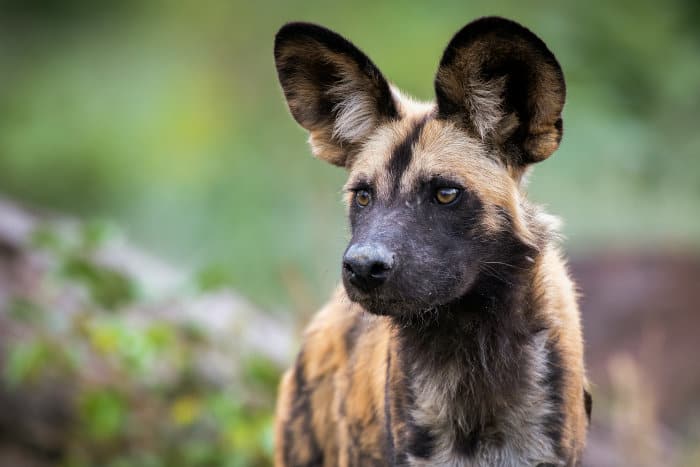3. Hunting and Feeding: As cooperative hunters, African wild dogs employ sophisticated strategies to catch prey. They rely on teamwork, speed, and endurance to pursue and bring down a wide range of prey species, including antelopes, gazelles, and other small to medium-sized mammals. Once a target is identified, the pack members work together to chase, isolate, and overwhelm the prey, using their sharp teeth and powerful jaws to deliver fatal bites.
4. Conservation Status: Despite their remarkable adaptability and hunting prowess, African wild dogs face numerous threats to their survival in the wild. Habitat loss, human-wildlife conflict, disease, and poaching pose significant challenges to their long-term viability. As a result, African wild dogs are classified as endangered by the International Union for Conservation of Nature (IUCN), with only an estimated 6,000 individuals remaining in the wild.
5. Conservation Efforts: Conservation organizations and wildlife authorities are actively engaged in efforts to protect and conserve African wild dogs and their habitats. These initiatives include the establishment of protected areas, habitat restoration projects, community-based conservation programs, and anti-poaching efforts. Additionally, research and monitoring programs are helping scientists better understand the ecology and behavior of African wild dogs, informing conservation strategies and management decisions.
In conclusion, African wild dogs are remarkable creatures with a unique blend of beauty, intelligence, and social complexity. Their survival in the wild depends on our collective efforts to address the threats they face and to ensure the preservation of their habitats. By supporting conservation initiatives and raising awareness about the plight of African wild dogs, we can help secure a brighter future for these iconic predators and the ecosystems they inhabit.

